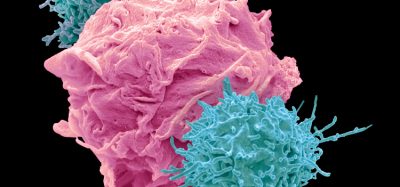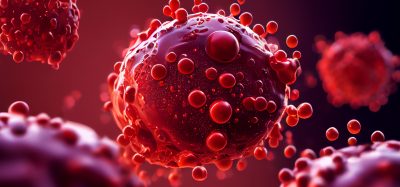Mechanism discovered that enables TB persistence in humans
Posted: 2 January 2024 | Drug Target Review | No comments yet
One gene involved in the production of iron-sulphur clusters may be crucial for the persistence of Mycobacterium tuberculosis.

Scientists from the Indian Institute of Science (IISc) collaborating with the National Centre for Biological Sciences (NCBS) and InStem, have discovered a mechanism that allows the tuberculosis (TB) bacterium to persist in the human host for decades. One gene involved in the production of iron-sulphur clusters could be essential for the persistence of the TB bacterium.
TB is caused by the bacterium Mycobacterium tuberculosis (Mtb), which can be present in the human body for decades without any symptoms. First author of the study Mayashree Das, PhD student at the Department of Microbiology and Cell Biology (MCB), IISc, explained: “Mtb needs humans to survive. In many cases of Mtb infection, the immune system can detect the bug and clear it out.”
However, in some asymptomatic individuals, Mtb hides within deep oxygen-limiting pockets of the lung and enters a state of dormancy in which it does not divide and is metabolically inactive. This enables it to hide from the immune system and TB drugs.
Dr Amit Singh, Associate Professor at MCB and corresponding author of the study, said: “Due to persistence, there is a bacterial reservoir in a subset of the human population at any point which can reactivate and cause infection. Unless we understand persistence, we will not be able to eradicate TB.”
Dr Singh’s team grew Mtb in liquid cultures containing special supplements required for its growth in a Bio Safety Level-3 facility at the Center for Infectious Disease Research (CIDR), IISc. Several proteins in Mtb depend on iron-sulphur clusters, that consist of iron and sulphur atoms organised in various configurations like chains or cuboids, for functioning. In cellular reactions like respiration and carbon metabolism, the iron atoms in the cluster can pass on electrons from one site of a protein complex to another.
Singh elucidated: “The iron-sulphur cluster-containing proteins are important for essential processes such as energy production by respiration, enabling the bacteria to survive harsh conditions of the lungs and causing infection. So, we wanted to study the mechanisms that Mtb uses to build these iron-sulphur clusters.”
The SUF operon, a set of genes that get switched on together, in Mtb mainly produce the iron-sulphur clusters, although there is another single gene called IscS that also produces the clusters. To understand why the bacterium requires both, the scientists generated a mutant version of Mtb that lacked the IscS gene and discovered that under normal and oxygen-limiting conditions, iron-sulphur clusters are produced mainly by the action of the IscS gene.
However, the iron atoms of the clusters become oxidised and released when the bacterium faces a lot of oxidative stress, which damages the clusters. Therefore, there is an increased demand for generating more clusters, which switches on the SUF operon.
Then, to understand how the IscS gene contributes to disease progression, the researchers infected mice models with the mutant version of Mtb lacking the IscS gene. The absence of this gene resulted in severe disease in the infected mice rather than a persistent, chronic infection typically seen in TB patients.
In the absence of the IscS gene, the SUF operon is highly activated, although in an unregulated fashion, leading to hypervirulence. Depleting both IscS and the SUF system greatly reduced the persistence of Mtb in mice. Therefore, the team found that the IscS gene keeps the activation of the SUF operon in check, causing persistence in TB.
The researchers also found that bacteria lacking the IscS gene were more likely to be killed by certain antibiotics. “It becomes sensitive to some antibiotics and resistant to some. We would also like to explore this further,” stated Das. The team believes that combining antibiotics with drugs targeting IscS and SUF could be more effective.
This study was published in Science Advances.
Related topics
Drug Targets, Virology
Related conditions
mycobacterium tuberculosis
Related organisations
Indian Institute of Science (IISc), Instem, National Centre for Biological Sciences (NCBS)
Related people
Dr Amit Singh (IISc), Mayashree Das (IISc)







